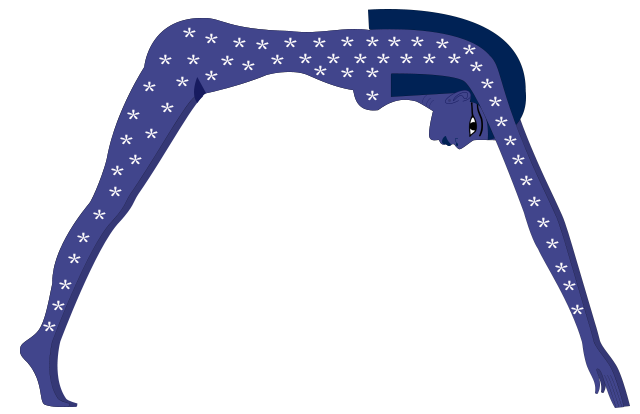Difference between revisions of "Template:Occult.live:Today's featured article"
Occultwiki (talk | contribs) |
Occultwiki (talk | contribs) |
||
| Line 1: | Line 1: | ||
[[File: | [[File:Nut Goddess.png|250px|left]] | ||
'''[[Nut]]''' is the goddess of the sky, stars, cosmos, mothers, astronomy, and the universe in the ancient [[Egyptian religion]]. She was seen as a star-covered nude woman arching over the Earth, or as a cow. She was depicted wearing the water-pot sign (''nw'') that identifies her. Nut is comparable to the Mesopotamian goddess Ninhursag (the "lady of heaven") also sharing her role as mother of the gods. | |||
[[ | Nut is a daughter of Shu and Tefnut. Her brother and husband is [[Geb]]. She had four children – Osiris, [[Set]], [[Isis]], and Nephthys – to which is added [[Horus]] in a Graeco-Egyptian version of the myth of Nut and Geb. She is considered one of the oldest deities among the Egyptian pantheon, with her origin being found on the creation story of Heliopolis. She was originally the goddess of the nighttime sky, but eventually became referred to as simply the sky goddess. | ||
Nut is also the barrier separating the forces of chaos from the ordered cosmos in the world. She was pictured as a woman arched on her toes and fingertips over the Earth; her body portrayed as a star-filled sky. | |||
'''([[ | '''([[Nut|Full Article...]])''' | ||
Revision as of 20:12, 7 April 2023
Nut is the goddess of the sky, stars, cosmos, mothers, astronomy, and the universe in the ancient Egyptian religion. She was seen as a star-covered nude woman arching over the Earth, or as a cow. She was depicted wearing the water-pot sign (nw) that identifies her. Nut is comparable to the Mesopotamian goddess Ninhursag (the "lady of heaven") also sharing her role as mother of the gods.
Nut is a daughter of Shu and Tefnut. Her brother and husband is Geb. She had four children – Osiris, Set, Isis, and Nephthys – to which is added Horus in a Graeco-Egyptian version of the myth of Nut and Geb. She is considered one of the oldest deities among the Egyptian pantheon, with her origin being found on the creation story of Heliopolis. She was originally the goddess of the nighttime sky, but eventually became referred to as simply the sky goddess.
Nut is also the barrier separating the forces of chaos from the ordered cosmos in the world. She was pictured as a woman arched on her toes and fingertips over the Earth; her body portrayed as a star-filled sky.
